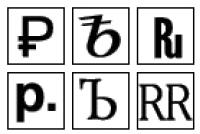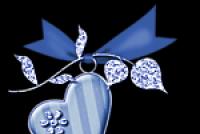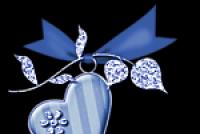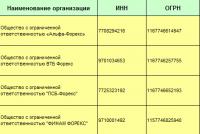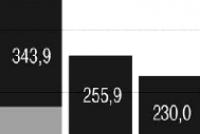Vehicle depreciation groups. Classification of fixed assets into depreciation groups. Estimated depreciation rates for fixed assets by depreciation groups
Depreciation groups and useful lives. Search for groups by OKOF code online.
The fixed assets classifier serves to assign the depreciation period of material assets and uses the codes of the All-Russian classifier of fixed assets. For fixed assets put into operation since 2017, the useful life is determined by the codes of the new OKOF OK 013-2014. For fixed assets introduced before 2017, the terms are determined by the codes of the old OKOF OK 013-94. If, according to the new classifier, the fixed asset belongs to another group of the organization, then the terms do not change. For tax accounting, be guided by subparagraphs 8 of paragraph 4 of article 374 of the Tax Code of the Russian Federation and paragraph 58 of article 2 of the Law of November 30, 2016 No. 401-FZ.
Determination of the amortization group and useful lives according to the OKOF code:
Classification by one table in MS Excel format, 51Kb Download
Depreciation groups:
- The first group - all short-lived property with a useful life from 1 to 2 years inclusive
- cars and equipment
- The second group - property with a useful life of more than 2 years to 3 years inclusive
- cars and equipment
- Transport means
- Perennial plantations
- The third group - property with a useful life of over 3 years to 5 years inclusive
- cars and equipment
- Transport means
- Industrial and household stock
- The fourth group - property with a useful life of over 5 years up to 7 years inclusive
- Building
- Structures and transmission devices
- cars and equipment
- Transport means
- Industrial and household stock
- Working cattle
- Perennial plantations
- The fifth group - property with a useful life of over 7 years to 10 years inclusive
- Building
- Structures and transmission devices
- cars and equipment
- Transport means
- Industrial and household stock
- Sixth group - property with a useful life of over 10 years to 15 years inclusive
- Structures and transmission devices
- Dwellings
- cars and equipment
- Transport means
- Industrial and household stock
- Perennial plantations
- Seventh group - property with a useful life of over 15 years up to and including 20 years
- Building
- Structures and transmission devices
- cars and equipment
- Transport means
- Perennial plantations
- Fixed assets not included in other groups
- Eighth group - property with a useful life of over 20 years up to 25 years inclusive
- Building
- Structures and transmission devices
- cars and equipment
- Vehicles
- Industrial and household stock
- The ninth group - property with a useful life of over 25 years up to 30 years inclusive
- Building
- Structures and transmission devices
- cars and equipment
- Vehicles
- Tenth group - property with a useful life of over 30 years inclusive
- Building
- Structures and transmission devices
- Dwellings
- cars and equipment
- Vehicles
- Perennial plantations
Name: All-Russian classification of fixed assets Abbreviation: OKOF Designation: OK 013-2014 (SNA 2008) In English: Russian classification of fixed assets Responsible: Rostekhregulirovanie Basis: Rosstandart order of 12.12.2014 No. 2018-st Date of introduction: 01.01.2017 Date endings: not installed (there is no order to cancel the classifier or replace it with a new one) Last change: No. 5, effective from July 1, 2018 Basis for the change: Rosstandart order of 05/08/2018 No. 225-st. Adopted instead of OKOF OK 013-94.
Harmonization of OKOF with SNA 2008
OKOF OK 013-2014 was developed on the basis of harmonization with the System of National Accounts (SNA 2008) of the United Nations, the European Commission, the Organization for Economic Cooperation and Development, the International Monetary Fund and the World Bank Group. This means that the new OKOF, entered into force on January 1, 2017, uses the classification of fixed assets adopted in international practice. Below is a table of the correspondence between OKOF codes and SNA 2008 designations.
| SNA 2008 | OKOF | ||
|---|---|---|---|
| Designation | The code | Name of types of fixed assets | |
| AN111 | Residential buildings | 100 100.00.00.00 | Residential buildings and premises |
| AN112 | Other buildings and structures | 200 200.00.00.00.000 | Buildings (other than residential) and structures, land improvement costs |
| AN1121 | Non-residential buildings | 210 210.00.00.00.000 | Buildings (except residential) |
| AN1122 | Other structures | 220 220.00.00.00.000 | Constructions |
| AN1123 | Land improvements | 230 230.00.00.00 | Land improvement costs |
| AN113 | cars and equipment | 300 300.00.00.00.000 | Machinery and equipment, including household inventory, and other objects |
| AN1131 | Transport equipment | 310 310.00.00.00.000 | Vehicles |
| AN1132 | 320 320.00.00.00.000 | Information, computer and telecommunication (ICT) equipment | |
| AN1133 | Other machinery and equipment | 330 330.00.00.00.000 | Other machinery and equipment, including household inventory, and other objects |
| AN114 | Weapon systems | 400 400.00.00.00 | Weapon systems |
| AN115 | 500 500.00.00.00.000 | Cultivated biological resources | |
| AN1151 | Animal resources bringing products on a regular basis | 510 510.00.00.00.000 | Cultivated resources of animal origin, repeatedly producing products |
| AN1152 | Resources of trees, crops and plantations bringing products on a regular basis | 520 520.00.00.00 | Cultivated plant resources that repeatedly produce products |
| AN116 | Costs associated with the transfer of ownership of non-produced assets | 600 600.00.00.00 | Transfer costs of non-produced assets |
| AN117 | Intellectual property products | 700 700.00.00.00 | Intellectual property objects |
| AN1171 | 710 710.00.00.00 | Research and development | |
| AN1172 | Exploration and appraisal of mineral reserves | 720 720.00.00.00 | Expenses for the exploration of subsoil and the evaluation of mineral reserves |
| AN1173 | Computer software and databases | 730 730.00.00.00 | Software and databases |
| AN11731 | Computer software | 731 731.00.00.00 | Software |
| AN11732 | Database | 732 732.00.00.00 | Database |
| AN1174 | Originals of entertainment, literary and artistic works | 740 740.00.00.00 | Originals of works of entertainment genre, literature or art |
| AN1179 | Other intellectual property products | 790 790.00.00.00 | Other objects of intellectual property |
Depreciation groups
Fixed assets are divided into depreciation groups. By depreciation groups the periods of amortization of material assets (useful life of the property) are determined. The groups use OKOF classifier codes. In the appendix to the Decree of the Government of the Russian Federation of January 1, 2002 No. 1, the classification of fixed assets included in depreciation groups was approved for the old OKOF OK 013-94, which has become invalid. In 2016, the Resolution introduced new classification taking into account the codes of the new OKOF OK 013-2014. Below are the classification groups. Use the search form for a group of fixed assets and useful life by the OKOF code.
RESOLUTION
dated July 7, 2016 N 640
ON INTRODUCTION OF AMENDMENTS TO THE REGULATION OF THE GOVERNMENT OF THE RUSSIAN FEDERATION OF January 1, 2002 N 1
Government Russian Federation decides:
1. To approve the attached changes, which are made to the decree of the Government of the Russian Federation of January 1, 2002 N 1 "On the Classification of fixed assets included in depreciation groups" (Collected Legislation of the Russian Federation, 2002, N 1, Art. 52; 2003, N 28, Art.2940; No. 33, Art. 3270; 2006, No. 48, Art. 5028; 2008, No. 39, Art. 4434; 2009, No. 9, Art. 1128; 2010, No. 51, Art. 6942; 2015 , N 28, art. 4239).
2. This resolution comes into force on January 1, 2017.
In the work of each enterprise or organization, fixed assets are used, which are part of the property of the organization, used as a means of production of goods, services, works or any administrative needs of the enterprise for a long time. When an organization takes a fixed asset for accounting, its initial cost is determined based on actual, objective costs for the acquisition, manufacture, construction, transportation, etc. excluding VAT.
To account for fixed assets during operation, their residual value is determined, which is the difference between the initial cost and depreciation during the operation.
As you know, all the property that the company has is depreciated over time, wears out. Depreciation of fixed assets is considered to be the transfer of part of the cost of fixed assets to the cost of goods, works or services. Depreciation is charged over the entire useful life (SPI) of the object, i.e. the period of time during which the application and use of an item of property, plant and equipment can bring economic benefits to the organization. Each enterprise can determine the useful life independently or use the classification of fixed assets developed on the basis of OKOF - All-Russian classifier fixed assets.
Further, depending on this indicator - SPI - the fixed asset can be attributed to one of the depreciation groups. The Tax Code defines only ten depreciation groups, and the classification of fixed assets included in this or that group, in turn, is approved by the Government of the Russian Federation.
Such a concept as "depreciation group" is used as for the purposes tax accounting for calculating income tax and for purposes accounting... The definition of depreciation of fixed assets for tax and accounting purposes is different.
Each depreciation group sets a clear interval expressed in terms of useful lives. It must be remembered that the lower limit of the interval of each depreciation group begins with the word "above", that is, the lower limit is not included in the interval, and the upper limit ends with the word "inclusive", that is, this figure is included in the interval of the depreciation group. For example, the third depreciation group is determined for a period of over 3 years and up to 5 years inclusive. That is, a fixed asset for which an SPI is established as 3 years is included in the second group, and with an SPI of 3 years 1 month in the third, at the same time a fixed asset with an established SPI of 5 years will still belong to the 3rd depreciation group.
For taxpayers with a good profit, it is most profitable to establish an SPI as early as possible, which will make it possible to write off the cost of an object as expenses earlier. For example, for the same third depreciation group, it is most advantageous to set a period of 3 years 1 month.
The concept of "depreciation group" is formulated in paragraph 1 of Article 258 of the Tax Code of the Russian Federation and is used mainly for tax accounting purposes.
In 2017, the useful life of some property, plant and equipment will change for depreciation purposes. The thing is that it takes action from 2017 new OKOF classifier... Our advice on what the accountant has to do in this regard.
OKOF since 2017
All accountants are required to apply since 2017 new OKOF - All-Russian classifier of fixed assets. It was adopted by Rosstandart order of December 12, 2014 No. 2018-st. Its abbreviated name is OK 013-2014 (SNA 2008).
At the same time, the former Classifier of fixed assets OK 013-94 ceases to operate. It was approved by the decree of the State Standard of Russia dated December 26, 1994 No. 359.
In OKOF OK 013-2014, ten depreciation groups remain, as before. However, some assets were transferred to other groups. New classifier OKOF since 2017 on our website can be viewed and downloaded here:
Effects changes in OKOF since 2017
All fixed assets from the Fixed Assets Classification included in depreciation groups (approved by the RF Government Decree of 01.01.2002 No. 1) are divided by codes from the All-Russian Classifier of Fixed Assets. therefore transition to new OKOFs from 2017 changed the amortization period of some assets in tax accounting. In this case, you need to be guided exclusively new OKOF codes from 2017 of the year. Changes to the current Classification of fixed assets for the purposes of tax depreciation were introduced by the Decree of the Government of the Russian Federation dated July 07, 2016 No. 640.

View and download changes in full OKOF 2017 and depreciation groups with a breakdown on our website you can follow this link:
What has changed with the arrival OKOF in 2017 year
Note that in the updated Fixed Assets Classification for depreciation purposes:
- codes have changed of the OKOF handbook since 2017;
- some objects have changed the depreciation group.
Please also note that the OKOF code is one of the requisites of the OS-6 inventory cards (approved by the decree of the State Statistics Committee of the Russian Federation of January 21, 2003 No. 7).
Classification of fixed assets included in depreciation groups - a normative document in which the types of fixed assets are divided into depreciation groups (10 depreciation groups).
The classification of fixed assets included in depreciation groups is approved by the Decree of the Government of the Russian Federation of 01.01.2002 N 1.
Changes are regularly made to the document. is given at the end of this material.
Comment
For each type of fixed assets in the Classification, a code, name and note are indicated.
Within depreciation groups, fixed assets are grouped into subgroups - Machinery and equipment, Transport vehicles, Structures and transmission devices, Buildings, Dwellings, Perennial plantations, Livestock workers.
Depreciable property is pooled in the next ten depreciation groups (Clause 3, Article 258 Of the Tax Code Russia):
2) For fixed assets related to 1-2 and 8-10 depreciation groups can apply amortization bonus in the amount of no more than 10% (see, clause 9 of article 258 of the Tax Code of the Russian Federation).
3) For fixed assets related to 3-7 depreciation groups a depreciation bonus of no more than 30% can be applied (see, clause 9 of article 258 of the Tax Code of the Russian Federation).
4) By fixed assets 3-7 depreciation groups can be applied (Article 286.1. Tax Code of the Russian Federation).
5) Increased depreciation rate 3 (for corporate income tax) for the leased asset is not applied to fixed assets related to 1 - 3 depreciation groups (Clause 2 of Article 259.3 of the Tax Code of the Russian Federation, see).
6) Taxpayers have the right to apply an increased depreciation rate 2 (for corporate income tax) in relation to depreciable fixed assets included in 1 - 7 depreciation groups and produced in accordance with the terms of a special investment contract (subparagraph 6 of paragraph 1 of Article 259.3 of the Tax Code of the Russian Federation).
7) In relation to buildings, structures, transmission devices 8 - 10 depreciation groups only the straight-line depreciation method can be applied (for corporate income tax). The non-linear depreciation method cannot be applied to such assets (clause 3 of article 259 of the Tax Code of the Russian Federation, see).
Depreciation groups of some property, plant and equipment
Personal Computer refers to ➤
Multifunctional devices (MFPs) refer to ➤
Office furniture refers to ➤
Cars belong to depreciation groups depending on their type. Most of passenger cars belongs to the 3rd depreciation group of fixed assets ➤
Trucks refer to depreciation groups depending on their carrying capacity and type. Most of them belong to the 3rd - 5th depreciation groups. ➤
Building belong to 4-10 depreciation groups, depending on their type ➤
Not all types of fixed asset objects can be found in Classifications... For those types of fixed assets that are not indicated in the depreciation groups, the useful life is set by the taxpayer in accordance with the specifications or recommendations of the manufacturers (clause 6 of article 258 of the Tax Code of Russia).
Using the Classification of Fixed Assets in Accounting
Until January 1, 2017, paragraph 2 of paragraph 1 of the Decree of the Government of the Russian Federation of 01.01.2002 N 1 directly indicated the possibility of using the classification in accounting:
"This Classification may be used for accounting purposes."
But, this paragraph was excluded from 01/01/2017 by Decree of the Government of the Russian Federation of 07/07/2016 N 640. Accordingly, from 01/01/2017 in accounting, when establishing the useful life, the rules established by regulatory enactments on accounting should be applied.
Many accountants, before the adoption of clear rules for determining the useful lives of fixed assets in accounting, continue to apply the Classification for accounting.
Overview of changes that have been made to the classification of fixed assets included in depreciation groups
Resolution of the Government of the Russian Federation of April 28, 2018 N 526 "On Amendments to the Classification of Fixed Assets Included in Depreciation Groups"
05/04/2018 on the official Internet portal of legal information pravo.gov.ru.
The beginning of the document: 12.05.2018
In accordance with clause 2, the document applies to legal relations that arose from January 1, 2018.
The essence of the changes:
Subsections "Structures and transmission devices" of the Classification by 3-10 depreciation groups have been significantly adjusted. Minor adjustments for subsections "Machinery and equipment" (2, 9 depreciation groups).
The changes take into account the industry-specific features of the equipment used in the oil industry, sea and river fleet, railway industry and other industries.
Decree of the Government of the Russian Federation of 07.07.2016 N 640 "On Amending the Decree of the Government of the Russian Federation of January 1, 2002 N 1"
First official publication: 12.07.2016 on the official Internet portal of legal information pravo.gov.ru.
The beginning of the document: 01.01.2017
The essence of the changes:
The new edition contains new codes of the new OKOF classifier, which is applied from 01.01.2017 -. The changes are not only technical. Many items of the Classification have been substantially updated. Thus, many new positions have appeared and the positions of the classifier have been removed, which were used until 2017.
The changes are large-scale and their significance is associated with fundamental differences between the old version of OKOF and its new version, which has been applied since 2017.
Historical reference
The classification of fixed assets included in depreciation groups was put into effect on January 1, 2002 by Decree of the Government of the Russian Federation of January 1, 2002 N 1 (clause 3).
Until January 1, 2002, the term “rates of depreciation deductions” was used instead of the term “depreciation group”. From January 1, 1991 to January 1, 2002, the Uniform norms of depreciation deductions were applied for the complete restoration of fixed assets of the USSR national economy, approved. Decree of the USSR Council of Ministers of 10.22.1990 N 1072.
The current Classification is generally more beneficial for taxpayers, as its useful lives are on average 30% shorter than the previous ones. Uniform norms (resulting in faster write-offs).

